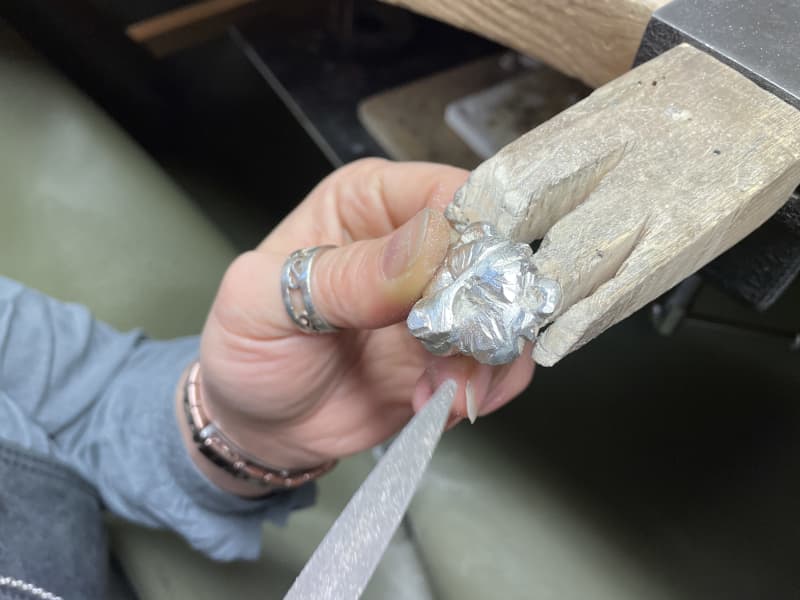The Museum of Finnish Crafts records the practice of handicrafts in Kainuu. 38-year-old designer and decorator Kati Nevalainen hopes Finnish craftsmanship will be appreciated.
Nevalainen himself hopes that the importance of a culture of making things with your hands will be recognised now and in the future.
Nevalainen, who owns his own jewellery workshop and shop in Kajaani, emphasises that making and repairing old things is not always easy. A craftsman often acts as an interpreter for his customers.
– As a goldsmith, I make important jewellery and products for people. The products mean much more than the material,” says Nevalainen.
The material can be, for example, hundreds of years old grandparents’ rings and watches, which are retuned for today.
– Yes, history and the appreciation of traditions come to the fore.
Using hand skills to combat a single-use society
Highlighting the status of companies that make a living through handicrafts is part of the focus of the Finnish Crafts Museum, and now the museum documents the everyday life of Kainuu’s handicraft professionals. The purpose is to bring craftsmanship to the fore and collect the silent knowledge of craftsmen for posterity.
Nevalainen has an idea about what change the handicraft profession could get even today: he hopes that the work of manual workers would be appreciated.
– We don’t live in a disposable society, and it is important that goods and products can be repaired. It is not necessarily the best option to buy inexpensively and save on material, because then the possibility of long-term repair is often lost.
Nevalainen, who hails from Juua in North Karelia, says that bread is often in short supply.
– I have said many times that I have restless hands syndrome, that I have to be able to do things with my hands. It would be wonderful if it were valued enough to live on it.
According to Nevalainen, handiwork and its history should be valued more. He hopes that issues and old methods and ways of working will be talked about.
– I hope that in the future people will remember and see my handprints and style from what I do, and that I will still be able to bring old traditional tools and traditional ways to this day, and maintain that history.
The everyday life of a professional is closely scrutinised
For example, exceptional times lasting several years in the world and in Finland can affect craftsmen. In the documentation work, attention is paid to, for example, whether fuel prices affect the work.
– The effects and operations are different here in Kainuu than, for example, in a densely populated area that does not have the same transportation costs, says Hahl.
Documenting information now is important.
– This will remain for future generations, i.e. decades and centuries to come, because it is not worth thinking about what it will be like in 2022, says Seija Hahl, amanuensis of the Museum of Finnish Crafts.
On a documentation trip to Kainuu, the museum brings a face and a story to three products designed and manufactured in the area. The museum interviews, photographs and videos representatives of handicraft entrepreneurs Karu Puu and Suometar jewelry shop in Kajaani, as well as representatives of Vilmingo ski shop in Sotkamo.
Contemporary documentation is part of the museum’s basic work, where it gets to know the craft professions of different regions.
– We want to bring out craftsmanship and the tacit knowledge that craftsmen have.
*How do you see the future of craft professions? You can discuss the topic until 23:00 on October 23.*

